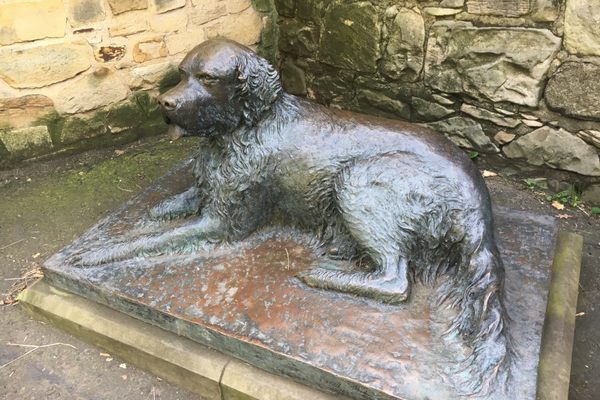About
Hachi, also known as Hachiko, is arguably one of the best-known dogs—or historical figures, even—in Japan. He famously waited for his master outside Shibuya Station for a decade after his death, becoming a symbol of loyalty. Now a statue of Hachiko stands on the spot, an iconic meet-up spot in Tokyo.
Unbeknownst to most, there's another Hachiko statue in the city of Ōdate in Akita Prefecture, in the Tōhoku region up north. The connection? This is his birthplace, the original home of Akita dogs.
Hachi was born among eight puppies on November 10, 1923, in the village of Niida, present-day Ōdate. He was selected to be sent to Tokyo as requested by Professor Hidesaburō Ueno. After a 20-hour train ride, Hachi arrived in Tokyo and spent a year with Ueno before he died of a cerebral hemorrhage. Hachi kept waiting and waiting for Ueno, though often bullied and abused by passersby. After his story was published in the newspaper, however, he became a beloved icon and a statue was erected in his honor in 1934, a year before his death.
In 1977, the Akita Inu Preservation Society founded a museum in Ōdate, beside the Keijō castle site park. Twenty-seven years later, in 2004, a new statue of Hachiko was installed outside this museum. It reuses a pedestal once occupied by a bronze statue of Hachi which was lost during World War II, melted down, and surrendered as scrap metal. Titled Homesick Hachiko or Hachiko Longing for Home, it depicts Hachi looking up as if to welcome the long-awaited return of his master.
Related Tags
Know Before You Go
The statue stands in front of the Akita Dog Museum (not to be confused with the Akita Dog Visitor Center), just outside Keijō Park. While it is open from 9 AM to 4 PM, the statue can be viewed at all times. It is not the only Hachi-themed public artwork in Ōdate; see the city's official website for more information.
Hidden Japan: Sado Island, Nara & Kyoto
Explore a different side of Japan.
Book NowCommunity Contributors
Added By
Published
November 6, 2024
























